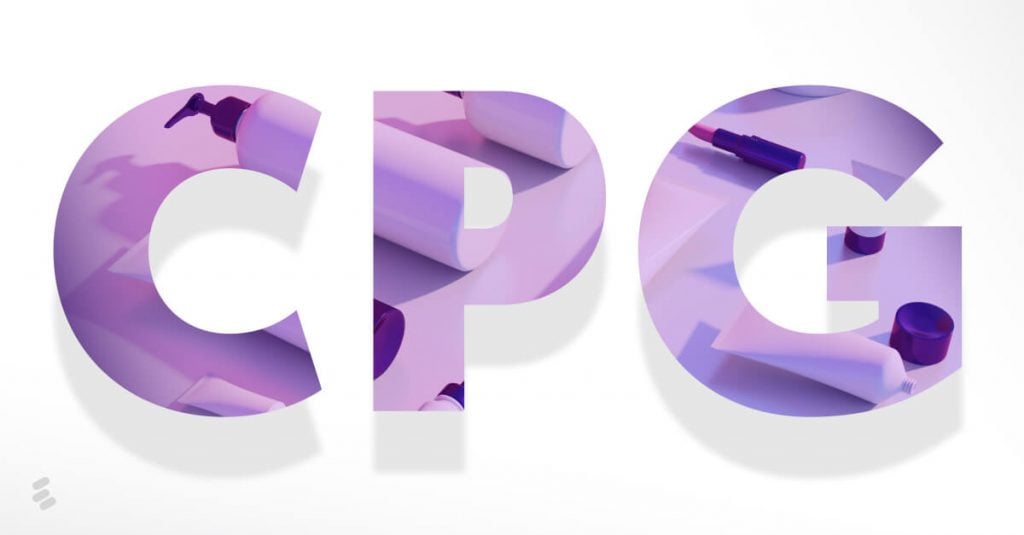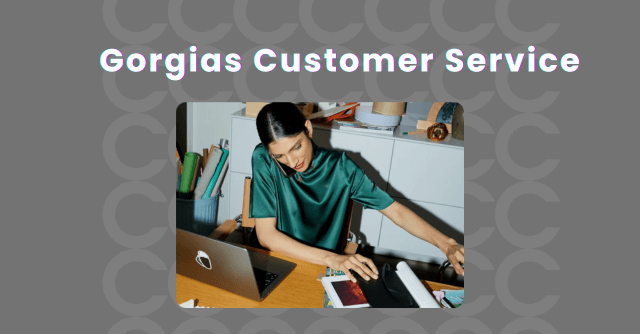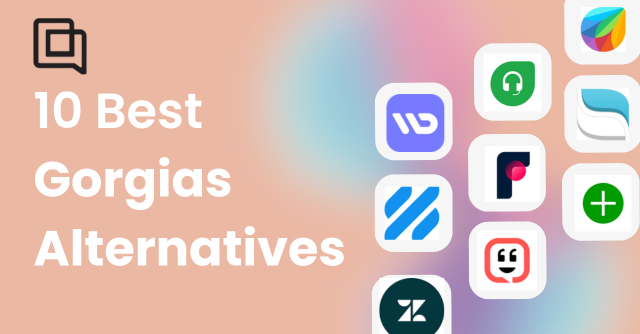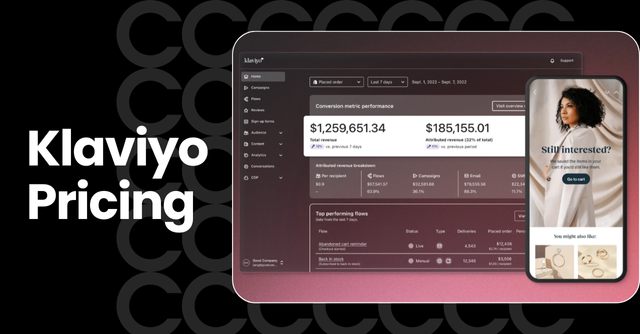Have you ever noticed what is on your shopping list almost every time you go grocery shopping? Common answers include food, beverages, cleaning products, household products, and makeup. Such things are called consumer packaged goods, or CPG, because people use and buy them on a regular basis. From the moment you wake up till you turn in for the night, CPGs always accompany you.
Today, we are going to take a closer look at CPG, including CPG brands, CPG marketing, and CPG marketing trends this year. Ready for the journey?
What are CPG brands?
CPG products, ranging from toothpaste to breakfast cereals, are unsung heroes of convenience and comfort. Commonly seen CPG brands include P&G (cleaning agents, personal care items, and healthcare products), Nestlé (food and beverage products), Coca-Cola (soft drinks), and Kimberly-Clark (hygiene and personal care products). Maybe you’ll find them in your kitchen and bathroom.
From a macro perspective, CPG brands feature the following characteristics. First, they sell products packaged for retail because their target customers are the masses. Second, Second, their products cover a wide range of areas. For example, Unilever sells both food and cleaning agents. Third, they tend to produce on a large scale.
CPG vs retail vs durable goods
Consumer packaged goods, retail goods, and durable goods are distinct categories within the broader consumer goods industry. This section investigates each of them in detail.
1. Different nature
As the name implies, consumer packaged goods are often connected to packaged and frequent consumption. Instances include food items, beverages, cleaning products, and hygiene products.
Retail goods, on the other hand, cover a more extensive range of products, including CPGs, durable goods, and more. Retailers serve as intermediaries between manufacturers and consumers. Retail giants include Amazon, Tesco, Walmart, and Target.
Durable products are designed to be used for a long period of time, hence higher prices. Typical durable goods include electronic devices, home appliances, and furniture.
2. Different life spans and replacement frequencies
As indicated above, consumer packaged goods are prone to have a short lifespan and be replaced over a short time. For example, you may have to shop for milk and eggs twice or thrice a week.
Since retail products include both CPGs and durable goods, they enjoy varying lifespans and replacement frequencies, depending on the nature of the products.
Durable products, such as refrigerators and mobile phones, enjoy longer lifespans. On most occasions, consumers are not bothered to find a replacement over a long time once buying.
3. Different packages and presentations
Consumer packaged goods are often packed in an appealing way to attract customers’ attention. That’s why many CPG brands spend a large amount of money on branding.
For instance, when consumers are accustomed to eating a particular brand of cereal, they are more likely to stick with it or try other lines of the same brand instead of risking other unfamiliar brands.
In addition, CPGs’ packaging is designed for convenience and quick consumption. Examples include plastic bags for crisps and cans for beverages.
Retail goods, again, encompass a wide variety of products, hence different packages. However, it is worth noting that how retail spaces are arranged affects consumer behavior.
One example is that candies for children are displayed near the checkout counter and on lower shelves in many supermarkets.
Because of their long lifespans and high quality, durable goods’ packaging focuses on protection during delivery. Compared with CPGs, durable goods producers pay less attention to presentation and emphasize quality and practicality.
What is CPG marketing?
Consumer packaged goods marketing, or CPG marketing, refers to the strategies CPG companies employ to promote their products and the action itself.
CPG marketing is characterized by its focus on goods frequently utilized and replenished by consumers. In other words, it is targeted at daily items, such as food products, beverages, personal care products, and cleaning agents.
Basically speaking, CPG marketing has the following key elements. First, CPG marketers are advised to build a strong and distinct brand identity. Second, they should have deep insights into consumer behavior and preferences. Third, CPG marketing professionals have a wide variety of promotion channels at their fingertips, thanks to the rapid development of the Internet.
Why is GPG marketing important?
Consumer packaged goods marketing, a dynamic and highly competitive act, plays a vital role in the healthy functioning of CPG brands. The reasons are listed below.
1. Branding
For starters, effective and efficient marketing in the highly competitive CPG market helps a brand stand out, attracting customers and generating higher revenue.
2. Building customer loyalty
Through marketing efforts, customers tend to go to a brand for replenishment directly. Loyalty programs, membership, promotions, and advertising contribute to long-term customer relationships and a good reputation.
3. Establishing partnerships
Since consumer packaged products are often sold by retailers, including individuals and supermarket chains, CPG marketing helps foster partnerships with such parties. Collaborating with retailers through marketing ensures the optimal shelf placement of products, hence better visibility and performance.
4. Gaining consumer insights
Last but not least, CPG marketing provides valuable consumer insights, such as their behavior, preferences, demographics, and so on. Such data, in turn, helps produce more targeted and effective marketing campaigns.
How do you market your CPG brand?
Now, we know marketing is a vital part of CPG brand building. This section offers a step-by-step tutorial about how CPG marketing campaigns are down.
1. Market research
Understanding the industry lays a solid foundation for efficient CPG marketing. Research content can cover target customer groups, main competitors, local industries, industrial trends, local buying behavior, etc. Analyzing such statistics helps identify differentiation opportunities and devise marketing strategies.
2. Define the brand
After grasping the general market and consumers, you should define your brand. This step leads to a clear brand position in the market. Determining how your brand stands out among competitors contributes to well-designed marketing campaigns.
3. Multi-channel marketing
With the development of technology and social media platforms, CPG marketing ought to be done through various channels for optimized effect.
For one thing, CPG marketers can establish a strong online presence for the brand through social media platforms, e-commerce websites, and others. Digital advertising proves to be rather effective and efficient in today’s interconnected world. Also, you can directly leverage e-commerce shopping websites to conduct B2C business.
For another, content marketing is of great help in CPG marketing. Professionals can create informative and entertaining blogs, pictures, videos, and so on to highlight the best part of the products, noticing the customers and pleasing them at the same time.
4. Continuous efforts
CPG marketing is a dynamic and ongoing process. Therefore, it is advised that you regularly monitor marketing and branding and stay innovative by improving advertising campaigns and product lines.
Continuous learning is also essential. By analyzing how your competitors promote their products, you learn from both their successes and mistakes.
Consumer packaged goods marketing is a comprehensive and complicated process that involves numerous elements. Apart from the above, CPG marketers can also focus on public relations, consumer engagement, community engagement, sustainability efforts, customer loyalty, in-store promotions, and partnerships.
Top 10 CPG brands you must know
When you are new to an industry or encounter some operation problems, learning from others’ success is always an effective and efficient solution. Here are ten shining examples in the consumer packaged goods industry, listed in descending order.
1. Johnson & Johnson
As one of the largest multinational corporations in the world, Johnson & Johnson is a major player in pharmaceuticals, medical devices, and consumer health. It has a unique motto called “Credo”, emphasizing its focus on the wellbeing of patients and employment.
In 2023, Johnson & Johnson generated total revenue of about $99.13 billion, up by 7.46% year over year.
2. PepsiCo
PepsiCo, also an American multinational corporation, is a recognized player in the field of food items and beverages. With a rich history tracing back to the 1960s, it has launched world popular brands, such as Pepsi, Lay’s, and Mountain Dew.
The company’s revenue for the twelve months ending September 2023 was approximately $91.62 billion, increasing by 9.53% year over year.
3. Procter & Gamble (P&G)
Procter & Gamble is known for selling a wide range of products, from healthcare products to cleaning agents. As a global force in the consumer packaged goods industry, the company has offered the world iconic brands, such as Tide, Olay, and Gillette.
Procter & Gamble reported annual revenue for the twelve months ending September 2023 of about $83.27 billion, rising by 3.48% year over year.
4. Unilever
The fourth powerful player in the CPG industry is Unilever, generating about $66.43 billion for the twelve months ending June 2023.
Dating back to the 19th century, Unilever is now a powerhouse with a diverse portfolio, selling goods from food and beverages, personal care products, and cleaning products. It shapes the field of consumer packaged goods with its notable brands, like Dove, Knorr, Ben & Jerry’s, and Lipton.
5. Anheuser-Busch InBev
Formed through the merger of Anheuser-Busch and InBev in 2008, Anheuser-Busch InBev, often abbreviated as AB InBev, is a beverage and brewing multinational corporation headquartered in Leuven, Belgium.
The company’s revenue for the twelve months ending September 30, 2023, was about $59.57 billion, up by 3.94% year-over-year, thanks to some of its world-famous brands, like Budweiser, Stella Artois, Corona, Beck’s, and Leffe.
6. The Coca-Cola Company
With its humble beginning in the late 19th century, the Coca-Cola company is famous in almost every inch of the world. The corporation is renowned for its soft drinks, with brands like Coca-Cola, Sprite, and Fanta. It is also one of the pioneers in the field of sugar-free food and beverages by releasing Diet Coke.
The beverage company had revenue for the twelve months ending September 30, 2023, of approximately $45 billion.
7. Kimberly-Clark
Focusing on personal care products, Kimberly-Clark is a significant player in the consumer packaged goods industry. It operates globally and serves customers in over 175 countries. The corporation owns notable brands, such as Kleenex, Huggies, Scott, and Kotex, which are integrated in people’s daily life.
For the twelve months ending September 2023, Kimberly-Clark generated revenue of about $20.43 billion, displaying a 1.23% increase year-over-year.
8. General Mills
Preferred by many American households, General Mills is a multinational food corporation with notable brands like Cheerios, Betty Crocker, Pillsbury, and Nature Valley. It produces a wide range of consumer goods, especially breakfast cereal and snacks. Apart from the kitchen, the company also focuses on sustainability, sparing no effort to reduce its environmental impact,
The food company had revenue of about $20.28 billion for the twelve months ending September 2023, a year-over-year increase of 5.79%.
9. Colgate-Palmolive
Colgate-Palmolive is an American multinational corporation recognized for oral care products and personal care products. Its iconic red-and-white packaging is connected to the pursuit of health and cleanness.
The corporation reported revenue of about $19.14 billion for the twelve months ending September 2023, representing an increase of 7.86% year over year.
10. Kellogg’s
Kellogg’s, a household name in the field of breakfast food and snacks, owns brands such as Kellogg’s Corn Flakes, Special K, Pringles, and Rice Krispies. It is committed to not only offering quality breakfast to every household but also promoting sustainability and responsible sourcing.
According to its latest financial report, Kellogg’s had revenue of $15.86 billion in 2023, compared with $15.31 billion in 2022 and $14.18 in 2021.
Consumer Packaged Goods Industry Trends 2024

Forecasting the trends or seeing how others forecast the trends in an industry is vital for the continuous prosperity of a business. Here are some predictions for the consumer packaged goods industry in 2024.
1. Prosperous online business
More transactions in the CPG industry will be done online. With the development of the Internet and e-commerce, an increasing number of safe and convenient e-commerce shopping platforms have emerged. Players in the CPG industry can take advantage of such up-to-date inventions to expand their customer bases by building a strong online presence.
2. Increased demand for health products
Health and well-being products will occupy a larger share of the CPG markets. Influenced by the powerful COVID-19 pandemic, more and more people start paying attention to their physical and mental health. Products with natural ingredients, nutritious fruit and vegetables, and functional benefits will be more popular.
Other trends include more focus on sustainability, innovative packaging, plant-based products, supply chain resilience, and so on.
What’s Next?
This marks the end of today’s journey to explore the art and science of consumer packaged goods and CPG marketing. Hopefully, you have gained a deeper understanding of this topic through the introductions and examples.
As mentioned earlier, e-commerce platforms are predicted to be the prevailing trend in the CPG industry this year. One of the most popular platforms is Shopify. With the help of e-commerce solution providers, such as Channelwill, you can easily manage your online store by improving marketing strategies, logistics, customer loyalty building, and so on.




